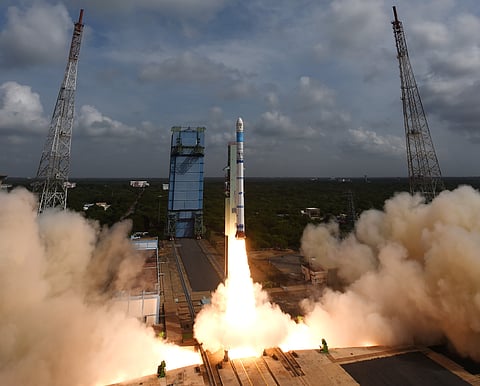
New Delhi- The Small Satellite Launch Vehicle (SSLV)-D3 launched the EOS-08 satellite into orbit on August 16 at 9:17 hrs. The spacecraft is designed to carry three payloads, including a microsat communications system, a global navigation satellite, and a dosimeter.
The EOS-08 mission is intended to develop a microsat that can provide data on a global scale to support a variety of applications, including environmental monitoring, disaster prevention, and industrial control. The satellite is built on a microsat/IMS-1 bus and weighs about 175.5 kg. It is powered by a battery and can generate up to 420 W of power.
The mission is equipped with three payloads. The first, the Electro Optical Infrared Payload (EOIR), is designed to capture images in the mid-wave and long-wave infrared bands. The EOIR payload is designed to capture images in the Mid-Wave IR (MIR) and Long-Wave IR (LWIR) bands, both during the day and night, for applications such as satellite-based surveillance, disaster monitoring, environmental monitoring, fire detection, volcanic activity observation, and industrial and power plant disaster monitoring. The second, the Global Navigation Satellite System-Reflectometry payload (GNSS-R), demonstrates the capability of using GNSS-R-based remote sensing for applications such as ocean surface wind analysis, soil moisture assessment, and cryosphere studies over the Himalayan region. The third, the SiC UV Dosimeter, monitors UV irradiance at the crew module's port and serves as a high-dose alarm sensor for gamma radiation.
The EOS-08 mission is a significant advancement in satellite mainframe systems. It incorporates a number of advanced technologies, including X-band data transmission and battery management. The mission also demonstrates the potential for using solar panels to power satellites. The EOS-08 mission is expected to last for one year and will provide valuable data for a variety of applications.
You can also join our WhatsApp group to get premium and selected news of The Mooknayak on WhatsApp. Click here to join the WhatsApp group.